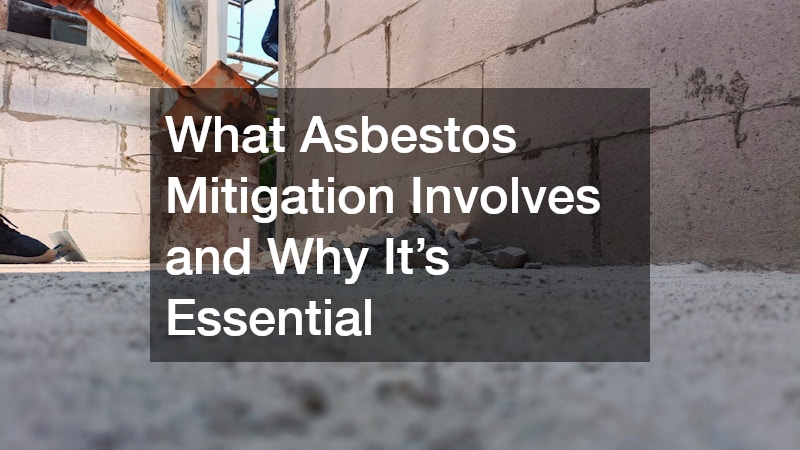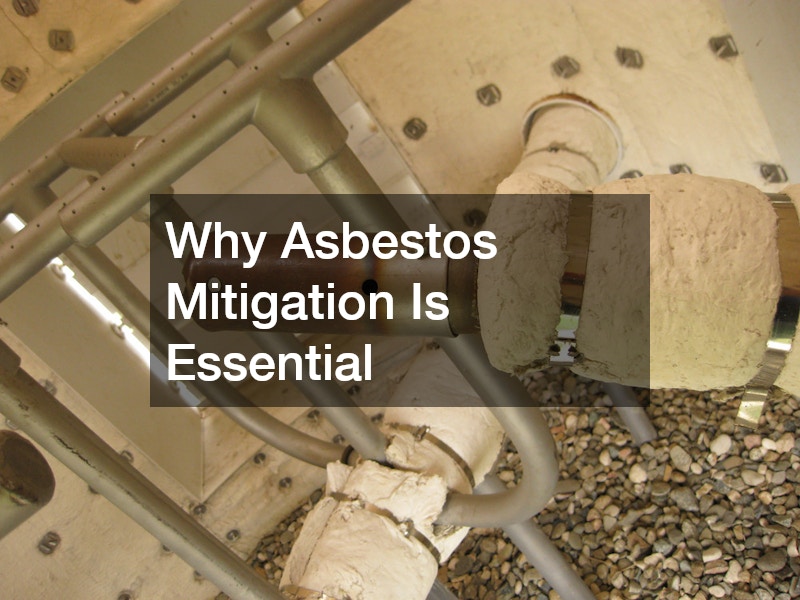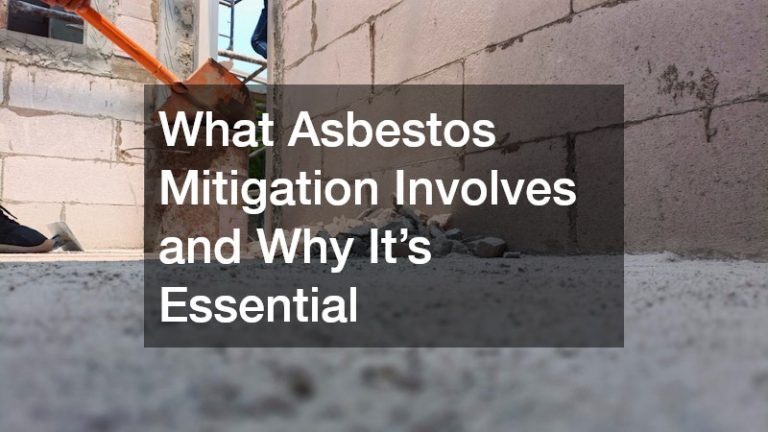
Asbestos mitigation is a critical process that ensures the safety and health of individuals residing or working in buildings containing this hazardous material. Despite being a naturally occurring mineral, asbestos poses severe health risks, such as lung cancer, mesothelioma, and asbestosis. The necessity of asbestos mitigation cannot be overstated, as exposure can lead to life-threatening conditions.
This article delves into what asbestos mitigation involves, why it’s essential, and the intricate steps required to ensure a safe environment. Understanding the importance of mitigation efforts is crucial for creating safer spaces and preventing future health issues.
Understanding Asbestos Mitigation
Asbestos mitigation involves a series of processes aimed at safely removing or encapsulating asbestos-based materials in buildings. The first step in asbestos mitigation is a thorough assessment of the building, identifying areas where asbestos is present. Once identified, a comprehensive plan is developed that outlines the methods for safely handling and removing asbestos. The process requires specialized equipment and trained professionals to prevent the release of harmful fibers into the air. Proper disposal of asbestos materials is vital, as improper handling can result in environmental contamination and severe health risks.
Another key aspect of asbestos mitigation is the containment of the affected areas to prevent the spread of asbestos fibers. Professionals use tools such as negative air pressure machines and HEPA filters to maintain a safe environment during removal. The use of personal protective equipment (PPE) is mandatory for the safety of workers involved in the mitigation process. Training and certifications are required for individuals performing asbestos mitigation to ensure adherence to legal and safety standards. The ultimate goal of asbestos mitigation is to eliminate the risk of exposure and protect public health.
During asbestos mitigation, regulatory compliance plays a significant role in guiding the process. Both federal and local regulations govern the management of asbestos to minimize health risks to the population. Agencies like the Environmental Protection Agency (EPA) and the Occupational Safety and Health Administration (OSHA) provide guidelines for safe asbestos handling. Regular inspections and environmental monitoring are necessary to ensure that mitigation efforts comply with these regulations. Overall, understanding the standards and procedures of asbestos mitigation is essential for executing an effective and safe mitigation project.
Why Asbestos Mitigation Is Essential
Asbestos poses a significant health risk, making its mitigation a vital process in maintaining safe environments. The fibers of asbestos can become airborne and enter the respiratory system, leading to serious health complications. Asbestos-related diseases, like mesothelioma, have been linked to long-term exposure, emphasizing the importance of mitigation measures. By preventing exposure through effective asbestos mitigation, the risk of these health issues can be significantly reduced. The mitigation process not only addresses current threats but also prevents future risks related to asbestos exposure.
In addition to health benefits, asbestos mitigation is essential for property owners as it affects property value and marketability. Buildings contaminated with asbestos can experience a decrease in value due to potential health hazards and increased liability. Ensuring a building is asbestos-free through professional mitigation can enhance property value and appeal to potential buyers. Real estate transactions often require documentation of asbestos inspection and mitigation, highlighting its importance in the buying and selling process. Ultimately, asbestos mitigation is a critical step for property owners to protect their investments and ensure safe living or working conditions.
An often-overlooked aspect of asbestos mitigation is its contribution to environmental protection. Asbestos fibers released into the environment can contaminate soil and water, posing additional risks to ecosystems and wildlife. By implementing effective asbestos mitigation, the spread of these hazardous fibers is halted, thereby protecting the broader environment from contamination. Environmental remediation is a crucial component of asbestos mitigation, emphasizing the necessity of proper procedures and containment strategies. Addressing asbestos issues is not only about preserving human health but also about protecting our natural surroundings for future generations.




